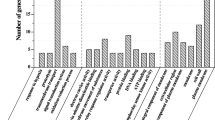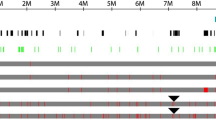Abstract
Addition of exogenous astaxanthin for improving ε-poly-l-lysine (ε-PL) production in Streptomyces griseofuscus was investigated in this study. By this unique strategy, the ε-PL production in shaker-flask fermentation was 2.48 g/L, which was 67.5% higher than the control at the addition dosage of 1.0 g/L, owing to the oxidation resistance of astaxanthin. In fed-batch fermentation, the ε-PL production reached 36.1 g/L, a 36.3% increase compared to the control. Intracellular response for oxidation in S. griseofuscus such as ROS generation and lipid peroxidation was reduced by astaxanthin addition. Illumina RNA deep sequencing (RNA-seq) technology further revealed that S. griseofuscus with astaxanthin addition showed down-regulated transcriptions of genes involved in oxidative stress. This research proved that the beneficial effect of astaxanthin addition was far better than glutathione (GSH) owing to the stronger antioxidant capacity, and provided a novel approach to regulate ε-PL synthesis.





Similar content being viewed by others
References
Hiraki J, Ichikawa T, Ninomiya S (2003) Use of ADME studies to confirm the safety of polylysine as a preservative in food. Regul Toxicol Pharm 37:328–340. https://doi.org/10.1016/S0273-2300(03)00029-1
Shih IL, Shen MH (2006) Microbial synthesis of poly (ε-lysine) and its various applications. Bioresour Technol 97:1148–1159. https://doi.org/10.1016/j.biortech.2004.08.012
Hiraki J, Masakazu H, Hiroshi M, Yoshikazu I (1998) Improved ε-poly-l-lysine production of an S-(2-aminoethyl)-l-cysteine resistant mutant of Streptomyces albulus. Seibutsu Kogakkaishi 76:487–493. https://doi.org/10.1016/S0922-338X(99)80023-3
Li S, Li F, Chen XS, Tang L, Mao ZG (2012) Genome shuffling enhanced ε-poly-l-lysine production by improving glucose tolerance of Streptomyces graminearus. Appl Biochem Biotechnol 166:414–423. https://doi.org/10.1007/s12010-011-9437-2
Li S, Chen XS, Dong CD, Zhao FL, Mao ZG (2013) Combining genome shuffling and interspecific hybridization among Streptomyces improved ε-poly-l-lysine production. Appl Biochem Biotechnol 169:338–350. https://doi.org/10.1007/s12010-012-9969-0
Wang L, Chen XS, Wu GY, Zeng X, Ren XD, Li S, Mao ZG (2016) Genome shuffling and gentamicin-resistance to improve ε-poly-l-lysine productivity of Streptomyces albulus W-156. Appl Biochem Biotechnol 180:1601–1617. https://doi.org/10.1007/s12010-016-2190-9
Wang L, Chen XS, Wu GY, Zeng X, Ren XD, Li S, Mao ZG (2017) Enhanced ε-poly-l-lysine production by inducing double antibiotic-resistant mutations in Streptomyces albulus. Bioprocess Biosyst Eng 40:271–283. https://doi.org/10.1007/s00449-016-1695-5
Rao YM, Sureshkumar GK (2001) Improvement in bioreactor productivities using free radicals: HOCl-induced overproduction of xanthan gum from Xanthomonas campestris and its mechanism. Biotechnol Bioeng 72:62–68. https://doi.org/10.1002/1097-0290(20010105)72:1%3c62:AID-BIT9%3e3.0.CO;2-9
Wei ZH, Bai L, Deng Z, Zhong JJ (2011) Enhanced production of validamycin A by H2O2-induced reactive oxygen species in fermentation of Streptomyces hygroscopicus 5008. Bioresour Technol 102:1783–1787. https://doi.org/10.1016/j.biortech.2010.08.114
González-Siso MI, Garcia-Leiro A, Tarrio N, Cerdán ME (2009) Sugar metabolism, redox balance and oxidative stress response in the respiratory yeast Kluyveromyces lactis. Microb Cell Fact 8:46–49. https://doi.org/10.1186/1475-2859-8-46
Zuin A, Castellano-Esteve D, AytéJ Hidalgo E (2010) Living on the edge: stress and activation of stress responses promote lifespan extension. Aging 2:231–237. https://doi.org/10.18632/aging.100133
Oliveira G, Tahara E, Gombert A, Barros M, Kowaltowski A (2008) Increased aerobic metabolism is essential for the beneficial effects of caloric restriction on yeast life span. J Bioenerg Biomembr 40:381–388. https://doi.org/10.1007/s10863-008-9159-5
Yan P, Sun HB, Lu PQ, Liu HL, Tang L (2018) Enhancement of ε-poly-l-lysine synthesis in Streptomyces by exogenous glutathione. Bioprocess Biosyst Eng 41:129–134. https://doi.org/10.1007/s00449-017-1849-0
Zeng X, Chen XS, Gao Y, Ren XD (2015) Continuously high reactive oxygen species generation decreased the specific ε-poly-l-lysine formation rate in fed-batch fermentation using glucose and glycerol as a mixed carbon source. Process Biochem 50:1993–2003. https://doi.org/10.1016/j.procbio.2015.09.012
Bierman M, Logan R, O’Brian K, Seno ET, Rao RN (1992) Plasmid cloning vectors for the conjugal transfer of DNA from Escherichia coli to Streptomyces sp. Gene 116:43–49. https://doi.org/10.1016/0378-1119(92)90627-2
Kahar P, Iwata T, Hiraki J, Park EY, Okabe M (2001) Enhancement of ε-poly-lysine production by Streptomyces albulus strain 410 using pH control. J Biosci Bioeng 91:190–194. https://doi.org/10.1016/S1389-1723(01)80064-5
Huang JC, Zhong YJ, Liu J (2013) Metabolic engineering of tomato for high-yield production of astaxanthin. Metab Eng 17:59–67. https://doi.org/10.1016/j.ymben.2013.02.005
Ohkawa H, Ohishi N, Yagi K (1979) Assay for lipid peroxides in animal tissues by thiobarbituric acid reaction. Anal Biochem 95:351–358. https://doi.org/10.1016/0003-2697(79)90738-3
Pokora W, Reszka J, Tukaj Z (2003) Activities of superoxide dismutase (SOD) isoforms during growth of Scenedesmus (chlorophyta) species and strains grown in batch-cultures. Acta Physiol Plant 25:375–384. https://doi.org/10.1007/s11738-003-0019-y
Qi K, Xia XX, Zhong JJ (2015) Enhanced anti-oxidative activity and lignocellulosic ethanol production by biotin addition to medium in Pichia guilliermondii fermentation. Bioresour Technol 189:36–43. https://doi.org/10.1016/j.biortech.2015.02.089
Deng X, Xia Y, Hu W, Zhang H, Shen Z (2010) Cadmium-induced oxidative damage and protective effects of N-acetyl-l-cysteine against cadmium toxicity in Solanum nigrum L. J Hazard Mater 180:722–729. https://doi.org/10.1016/j.jhazmat.2010.04.099
Yamanaka K, Kito N, Imokawa Y, Maruyama C, Utagawa T (2010) Mechanism of ε-poly-l-lysine production and accumulation revealed by identification and analysis of a ε-poly-l-lysine-degrading enzyme. Appl Environ Microbiol 76:5669–5675. https://doi.org/10.1128/AEM.00853-10
Grosicka-Maciag E, Kurpios-Piec D, Szumilo M, Grzela T (2011) Protective effect of N-acetyl-l-cysteine against maneb induced oxidative and apoptotic injury in Chinese hamster V79 cells. Food Chem Toxicol 49:1020–1025. https://doi.org/10.1016/j.fct.2011.01.009
Lushchak VI (2011) Adaptive response to oxidative stress: bacteria, fungi, plants and animals. Comp Biochem Physiol C Toxicol Pharmacol 153:175–190. https://doi.org/10.1016/j.cbpc.2010.10.004
Raman S, Song T, Bardarov S, Jacobs WR, Husson R (2001) The alternative sigma factor SigH regulates major components of oxidative and heat stress responses in Mycobacterium tuberculosis. J Bacteriol 183:6119–6125. https://doi.org/10.2514/6.2010-7840
Acknowledgements
This work was financially supported by Shandong Natural Science Foundation (ZR2019BC044).
Author information
Authors and Affiliations
Corresponding author
Ethics declarations
Conflict of interest
The authors declare that they have no conflict of interest.
Additional information
Publisher's Note
Springer Nature remains neutral with regard to jurisdictional claims in published maps and institutional affiliations.
Rights and permissions
About this article
Cite this article
Li, S., Ji, J., Hu, S. et al. Enhancement of ε-poly-l-lysine production in Streptomyces griseofuscus by addition of exogenous astaxanthin. Bioprocess Biosyst Eng 43, 1813–1821 (2020). https://doi.org/10.1007/s00449-020-02372-y
Received:
Accepted:
Published:
Issue Date:
DOI: https://doi.org/10.1007/s00449-020-02372-y




